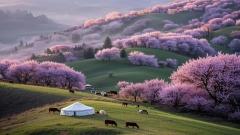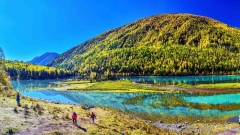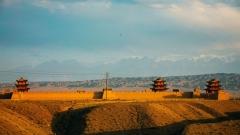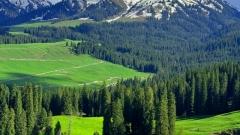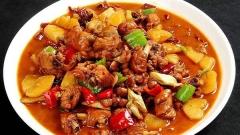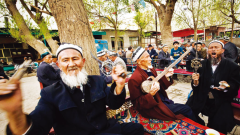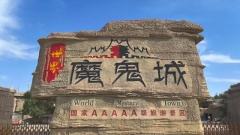Tekes Bagua City, located in Xinjiang’s Tekes County, is a unique tourist destination famous for its distinctive Bagua (Eight Trigrams) layout and rich cultural atmosphere. The city is circular and radiating like a labyrinth, with interconnected roads and no traffic lights. Besides its rare urban design, Tekes is also home to deep historical roots and beautiful natural landscapes — including the famous Kalajun Grassland.
Tekes County lies 119 km from Yining City in Xinjiang, in the eastern part of the Tekes River Valley in the upper reaches of the Ili River. The terrain is higher in the north and south, lower in the east and west. The southern region belongs to the southern branch of the Tianshan Mountains, the northern part to the central branch, and the central area is the flat valley where the Tekes River flows from west to east through the entire county.

Tekes Bagua City
Scenic Spots in Tekes Bagua City
1. Ake Kule Lake
Ake Kule is a high-mountain glacial moraine lake located just 2.5 km north of the main ridge of the southern Tianshan Mountains. It lies along the ancient glacier path of the Koksu River’s upper reaches. The lake is crystal-clear with a blue-green tint, icy cold year-round, and freezes in winter with a smooth mirror-like surface. The area enjoys cool temperatures and clean air in summer and is home to many rare wild animals.

Akkule Lake
2. Kalajun Grassland
Located in the southern Kalajun Mountains of Tekes County, about 30 km in a straight line from the county seat, this grassland is accessible via a simple road. Its elevation ranges from 1,600 to 2,800 meters, offering spectacular alpine meadows and sweeping panoramic views.
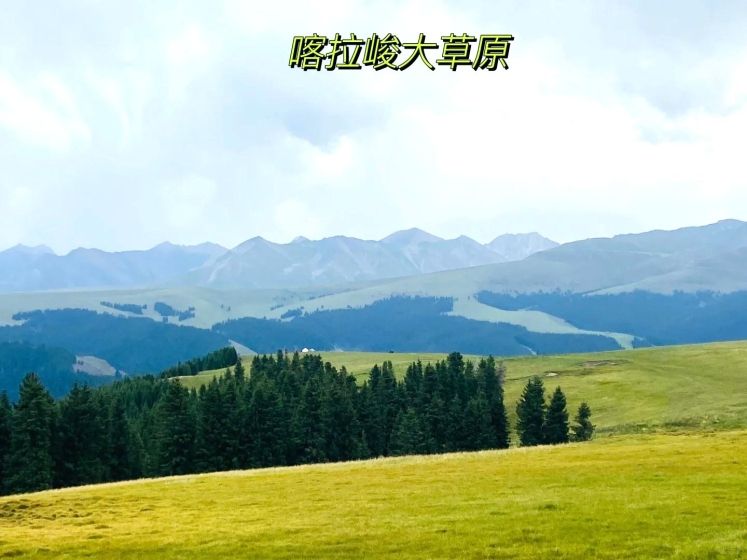
Kalajun Grassland
3. Tekes Karst Cave & Stone Forest
Tekes is home to Xinjiang’s only natural underground limestone cave, part of a typical karst landscape. Additionally, the upper reaches of the Koksu River feature a section of the Tianshan Stone Forest, the largest stone forest in Xinjiang and the second-largest in China. It’s a classic yardang landform, formed about 2 million years ago during intense mountain-building activity, stretching about 9 km long and 5 km wide.
Local Specialties in Tekes Bagua City
1. Famous Liquor – Yilitequ
Yili Daqu, also called “Yilitequ,” is a traditional strong-aroma baijiu (Chinese liquor). Crystal-clear and rich in fragrance, it offers a smooth taste with a long-lasting aftertaste. This award-winning liquor has been praised across Xinjiang and is known as the “Moutai of Xinjiang” for its outstanding quality and distinctive flavor.
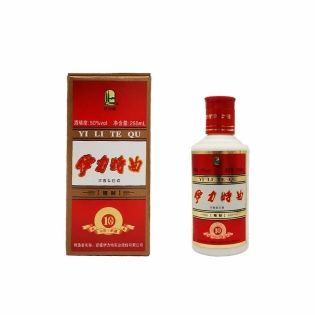
Yilitequ
2. Snow Lotus Flower
Snow Lotus (Saussurea involucrata) grows in alpine areas above 3,000 meters, such as the Tianshan and Kunlun Mountains. Known as the “Holy Flower of the Plateau,” it thrives in extreme environments and is extremely rare. Due to its remarkable resilience and scarcity, snow lotus holds high medicinal and ornamental value. It symbolizes purity, strength, and endurance and is a cultural treasure in highland regions.
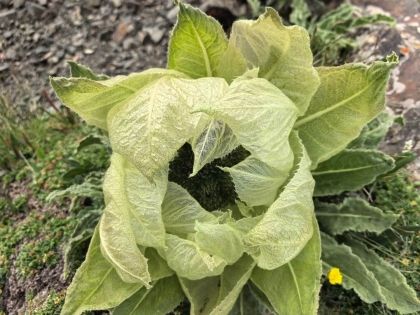
Snow Lotus Flower
Food Recommendations in Tekes Bagua City
Tekes cuisine features strong ethnic flavors. The best places for local snacks are around Jiefang Road Bus Terminal and the food plaza on Hongqi Road.
1. Stuffed Pork Belly (Stuffed Tripe with Meat)
This local Halal specialty consists of lamb or beef tripe stuffed with a mix of meat and offal. When served, it’s thinly sliced. The dish combines the tenderness of lamb with the crunch of cartilage and richness of organ meats, making it flavorful and texturally complex. Pairing it with a bowl of lamb offal soup elevates the taste.
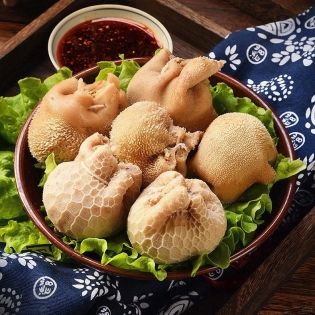
Stuffed Pork Belly
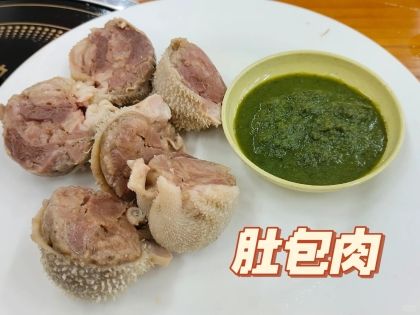
2. Naren (Hand-pulled Noodles with Meat)
Naren is a traditional nomadic dish, also known as hand-grabbed lamb or horse meat noodles. It is popular among ethnic groups such as the Kazakhs and Kyrgyz. In the past, it was a feast dish prepared only when receiving honorable guests. Typically eaten with milk tea, which helps cut the greasiness, Naren reflects the hospitality and culinary tradition of Xinjiang’s herders.
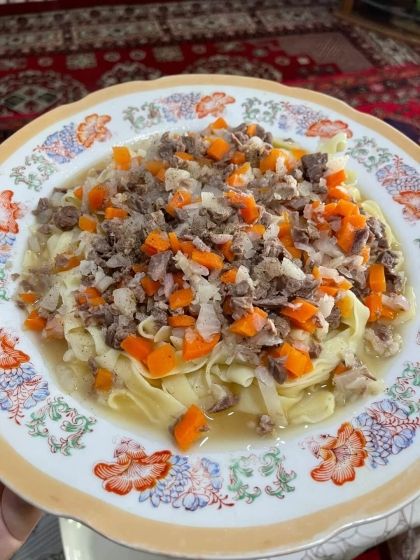
Xinjiang Naren (Hand-Pulled Noodles)




